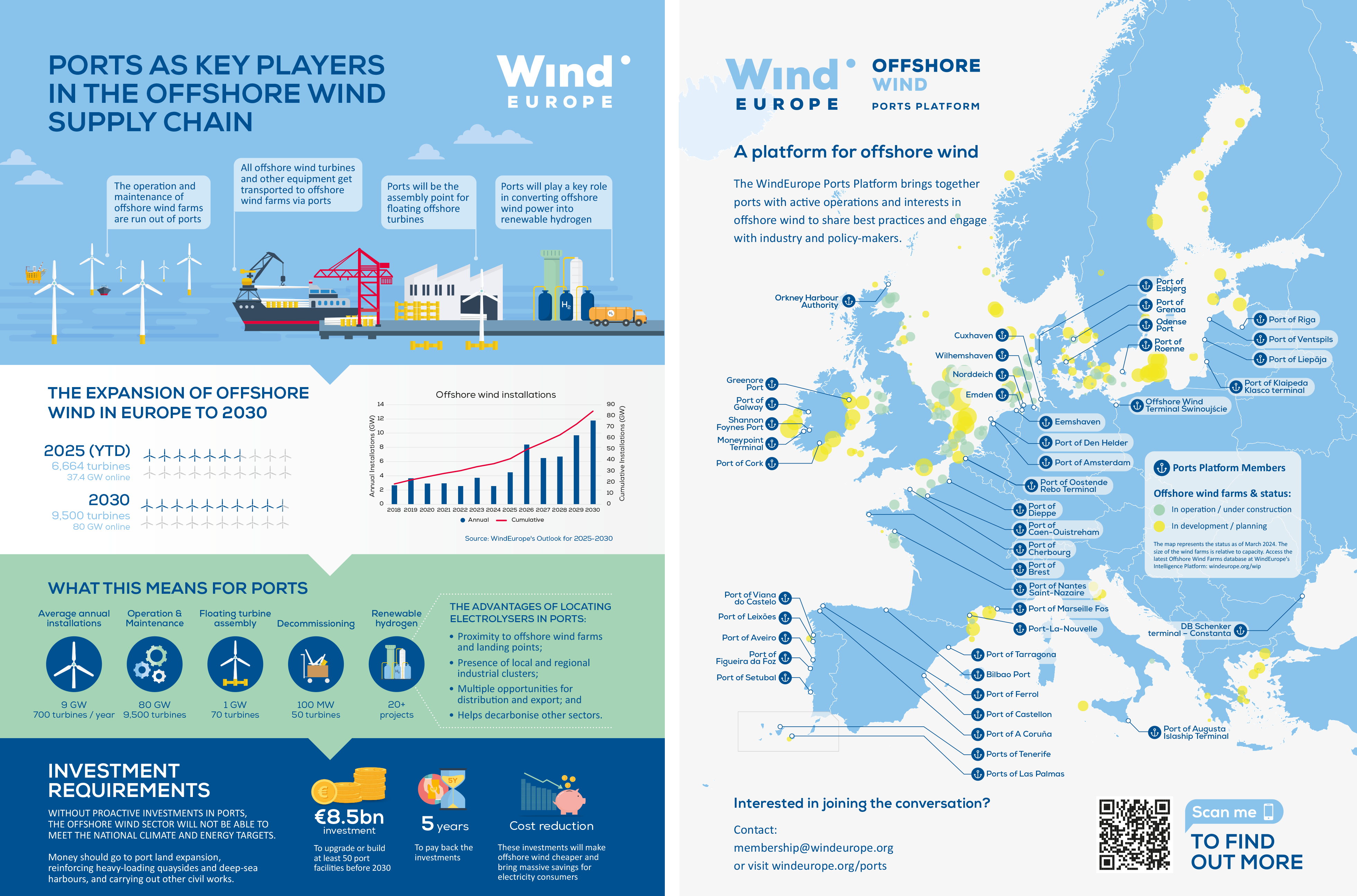©Port of Esbjerg-Christer Holte
Published on 27 May 2021
Overview
The EU goal of climate neutrality by 2050 requires a 25 times increase in offshore wind. Already in the next 10 years the volume of offshore wind in Europe needs to rise from 25 GW to over 110 GW.
Ports are central to the development of offshore wind. They play a key role for the local supply chain, logistics and supporting infrastructure (e.g. storage of components). Ports are where operation and maintenance of offshore wind farms are run, where all offshore windturbines and other equipment get transported, and where floating turbines are assembled. And they will have a prominent role in the production and distribution of renewable hydrogen.
But ports can only deliver those services if they make significant investments to upgrade and expand their infrastructure.
Europe’s ports need to invest €6.5bn between now and 2030 to support the expansion of offshore wind. This investment could be paid back in just five years and would bring significant savings for electricity consumers and society as a whole.
Section 1 of this report outlines what increased offshore wind activities will entail for ports and related services by 2030. It presents the key role of ports in the wider offshore wind supply chain and in the manufacturing and assembly of offshore wind turbines, including floating.
Section 2 presents the investments needed in ports to support the growth of offshore wind, including floating, operation and maintenance of wind farms, decommissioning, and upscaling renewable hydrogen.
Section 3 focuses on the role ports will play in the upscaling of renewable hydrogen and the links with offshore wind, its supply chain, and other sectors.
Ports are central to the development of offshore wind. They play a key role for the local supply chain, logistics and supporting infrastructure (e.g. storage of components). Ports are where operation and maintenance of offshore wind farms are run, where all offshore windturbines and other equipment get transported, and where floating turbines are assembled. And they will have a prominent role in the production and distribution of renewable hydrogen.
But ports can only deliver those services if they make significant investments to upgrade and expand their infrastructure.
Europe’s ports need to invest €6.5bn between now and 2030 to support the expansion of offshore wind. This investment could be paid back in just five years and would bring significant savings for electricity consumers and society as a whole.
Section 1 of this report outlines what increased offshore wind activities will entail for ports and related services by 2030. It presents the key role of ports in the wider offshore wind supply chain and in the manufacturing and assembly of offshore wind turbines, including floating.
Section 2 presents the investments needed in ports to support the growth of offshore wind, including floating, operation and maintenance of wind farms, decommissioning, and upscaling renewable hydrogen.
Section 3 focuses on the role ports will play in the upscaling of renewable hydrogen and the links with offshore wind, its supply chain, and other sectors.




